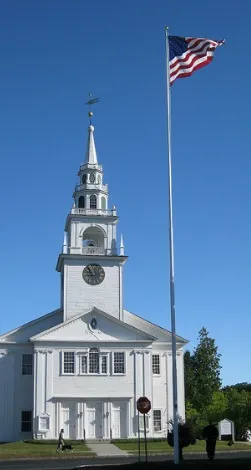Long Live America’s Small Towns
The author of our May article about the country’s best small towns was pleased to find that lots of small towns are thriving
/https://tf-cmsv2-smithsonianmag-media.s3.amazonaws.com/filer/gig-harbor-small.jpg)
When my editor at Smithsonian asked me to write a story about “The 10 Best Small Towns in America” for the magazine’s May issue, I didn’t expect an outpouring of responses: Facebook “Likes” and “Tweets” in the tens of thousands along with hundreds of very thoughtful e-mail comments, many of them from people happy to see their hometowns included. I also didn’t expect my research—hugely aided by Esri, a California-based geographic information systems company—to uncover towns of such widely differing character.
Small town meant just one thing to me: “Our Town,” the place described in Thornton Wilder’s classic American play as Grover’s Corners, New Hampshire. Remember how it begins with the Stage Manager pointing out its main street, drugstore, hitching posts and Congregational church? Later in Act I, the editor of the local newspaper makes his own assessment: Very ordinary town, if you ask me. Little better behaved than most. Probably a lot duller. But our young people seem to like it well enough: 90 percent of ’em graduating from high school settle down right here to live—even when they’ve been away to college.
There’s also an old James Taylor song I think of: “Letter in the Mail,” about what’s happened to small towns in the American hinterland as jobs dry up and people leave them.

I guess it never was much to look at
Just a one-horse town
The kind of place young people want to leave today
Store fronts pretty much boarded-up
Main Street pretty much closed-down
So, for me, it was an eye-opening pleasure to find that lots of small towns are thriving in ways unpredicted by the old model. Great Barrington, Massachusetts, for example, which claimed the top spot on our list, still evokes Grover’s Corners, with its white-steepled churches and doughnut bakeries. But you don’t have to live there to see that the town has changed, welcoming new immigrant groups and coming up with schemes like minting its own local currency to keep it vital.
My visit to Naples, Florida, another Smithsonian small town, underscored the way economy drives culture. As a second-home enclave for retired CEOs, it has the revenue to support a world-class symphony orchestra, art museum and theaters. With cultural institutions like those, no one has to sit home at night watching reality TV.
Gig Harbor, Washington, a working fishing village on the west edge of Puget Sound, was another story, perhaps the least reconstituted town on the list, which is actually its best feature. But with outlanders discovering its charms—a picture-perfect harbor and still relatively affordable waterfront property, not to mention very fresh fish—the town finds itself in a precarious place. Its effort to strike a balance between letting development in and staying the same requires thinking outside the box, protecting a traditional, low-tech industry that could die out as more lucrative enterprises come in.
In the end, writing the story showed me that every little town has its own distinctions, and challenges. No two are the same and there’s no single prescription for survival. I still dream about Grover’s Corners and can list any number of New England towns that recall it: bucolically beautiful Cornwall Bridge on the Housatonic River in the northwest corner of Connecticut; Cohasset, Massachusetts, just south of Boston; Hancock, New Hampshire, incorporated in 1779.
But in each case, if you look beyond the pretty picture, you find a tangle of small-town dynamics: conservation versus economic development, income inequality, environmental protection, public fund allotment—all driven by people with different agendas, intent on writing the continuing story of the place where they live.
I’m a city girl by nature, apt to romanticize dots on the maps with names like Menomonie and Siloam Springs—long may they live, all of them “Our Town.”
Planning Your Next Trip?
Explore great travel deals
Smithsonian magazine participates in affiliate link advertising programs. If you purchase an item through these links, we receive a commission.
/https://tf-cmsv2-smithsonianmag-media.s3.amazonaws.com/accounts/headshot/Spano.jpg)
/https://tf-cmsv2-smithsonianmag-media.s3.amazonaws.com/accounts/headshot/Spano.jpg)